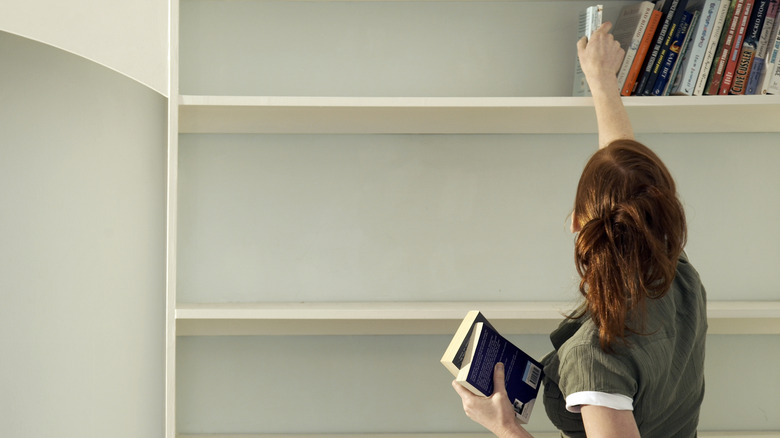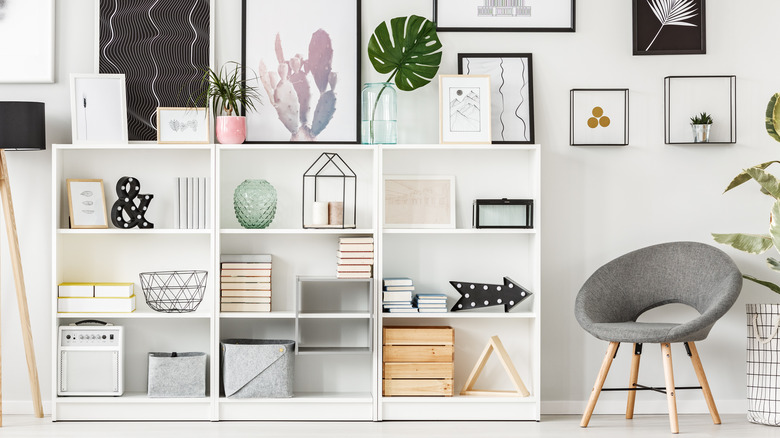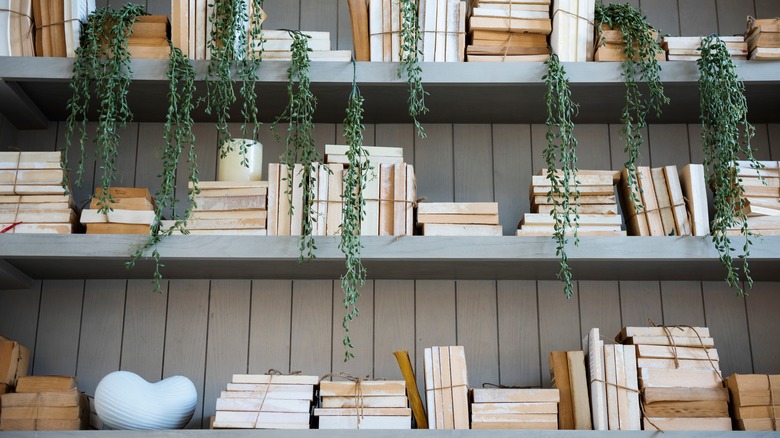What No Demo Reno's Jenn Todryk Wants You To Consider When Styling A Bookshelf
Decorated, well-stocked bookshelves can be one of the best elements in a room for providing storage, display space, and personality. While bookshelves come in all shapes and sizes, outfitting all of them may leave you at a loss for ideas beyond merely storing your books. According to design expert and HGTV host Jenn Todryk, there are some key things to keep in mind when decorating your bookshelves. Whether it is books or decor, marshaling three key elements — height, color, and texture — can be the key to beautiful, balanced shelf decor. Using these three principles will keep your bookshelves looking full, but not cluttered. Streamlined, but never boring.
According to Todryk, designing the perfect bookshelf depends on many factors, including size, scale, placement, and the amount of light and space in the room. While a large, deep set of shelves filled with coffee table books may work in a larger, well-lit space, it can easily overwhelm a smaller space, which would benefit from smaller-scale shelves and less going on visually. Marshaling these considerations, while keeping in mind the three principles above, can result in a perfect design every time.
Height and scale
Height applies not only to the objects you put on the shelves themselves. Large shelves can sometimes look off-balance if their contents are not filling up the space adequately. It also does not take advantage of available space, which is particularly important if you are using the shelves for necessary storage and not just display. Try to create visual layers in the available space, which may include interspersing taller items with lower ones and building various layers by stacking objects on books, baskets, and boxes that serve as risers. This also includes using many different shapes and profiles.
Jenn Todryk told Cosmopolitan, "In general, I think we're moving away from the minimalism trend — you know, where everything looks like a staged home? We're starting to see spaces that are a little more curated, and a little more lived in. So I think the 'more is more' mindset is coming back, because it has a certain hominess and coziness to it."
At the same time, avoid filling more compact shelves with too many small items, which can result in a cluttered shelf and a tendency to make the shelving unit look smaller and more cramped. Even on smaller shelves, try to add multiple heights to provide interest and avoid uniformity. Filling the shelves without overwhelming them may take some time, as well as trial and error.
Texture and color
While filling your bookshelves end to end with books can be a good way to maximize storage, bringing to mind overflowing library shelves and charming bookstores, most would benefit from a broader wealth of textures than just paper and bindings. Try adding different materials like stone, greenery, clay pots, and woven baskets. This can keep a bookshelf from looking too uniform, especially if you are using more neutral tones and less color.
Color, according to Jenn Todryk, is similarly important. While there is much contention over organizing your shelves by color or turning books around for a neutral look, harnessing color can be a great way to make your bookshelf look its best. This can mean sticking to neutrals in a neutral room or adding a few key accent colors that complement or form your book collection. This also applies to the color of your shelves themselves, which can be a factor you need to keep in mind when selecting items to style your bookshelf. As Todryk told Cosmopolitan, "Color dispersion is a key element when it comes to anything in design. Just pick a color palette before you start shopping."



